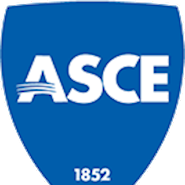ASCE has honored Balakumar Balachandran, Ph.D., A.M.ASCE, with the 2022 Robert H. Scanlan Medal for distinguished contributions in nonlinear, engineering mechanics, with a focus on structures and aeroelasticity, including wind energy harvesters.
Balachandran has carried out important experimental, computational, and analytical work with flexible structures, especially those that are susceptible to internal resonances. His substantial body of work over the last several decades (see 1989 ASME Journal of Applied Mechanics and 1989 ASME Applied Mechanics Reviews articles) is not only of fundamental interest but also relevant to an extensive range of structures, including cables, bridges, buildings, and towers. Apart from this, I should note that his nonlinear interactions work (1994 AIAA Journal paper) has also made its way into NASA manuals for system identification algorithms (e.g., eigenvalue realization algorithm); this is another example of a noteworthy transition to practice. In the realm of structural mechanics, he has also considered other applications to flexible structures such as oil well drillstrings.
With regard to the quality of the work and its prior recognition, one can cite the ASME Melville Medal that was awarded for his 2014 ASME Journal of Vibrations and Acoustics paper. Combining a treatment of nonlinear structural dynamics and nonlinear aerodynamics is critical for studying the motions of flexible structures such as wind turbine blades and wing structures that operate over a range of Reynolds numbers. Related to that, along with his students and collaborators he has developed computational simulators for nonlinear aeroelasticity studies. As elaborated in their 2017 AIAA Journal paper, they consider geometric nonlinearities and develop a structural dynamics simulator that is bi‐directionally coupled to a nonlinear, unsteady vortex lattice-scheme-based fluid dynamics simulator. This simulator is not only useful for studies of wing structures, but also for studies of wind turbines and civil engineering structures subjected to aerodynamic loads.
Of course, these simulators can be computationally quite expensive. Recently, along with one of his doctoral students and other collaborators, he has worked on accelerating the computational time of these simulators in two ways. One is based on hardware, such as the use of a GPU. The other is based on better algorithms such as the fast multipole method. To that end, there is his 2019 Journal of Aerospace Information Systems paper, in which the computational speedups one can obtain are detailed. If one looks over the papers that cite the abovementioned articles, one will find that several of them address the aerodynamics and aeroelasticity of wind turbines. With the increasing use of wind power, which is projected to be a fairly significant portion of all generated electrical energy in the nation within a decade, computationally fast algorithms will be critical for timely studies of wind turbine systems. All of this points to the great impact of Balachandra’s work on not only nonlinear aerodynamics and nonlinear aeroelasticity, but also on wind engineering.
In some of his most recent work, Bala has extended his nonlinear aeroelasticity work to include piezoelectric materials in addition to structural and fluid models, for a wind energy harnessing application. Over his nearly 30 years at the University of Maryland, he has educated thousands of undergraduate and graduate students in the classroom. Of further note is his co-authoring of the Wiley-published book Applied Nonlinear Dynamics.
The Robert H. Scanlan Medal is awarded to an individual in recognition of distinguished achievement in engineering mechanics based upon scholarly contributions to both theory and practice. The areas of achievement will generally be structural mechanics, wind engineering, and aerodynamics.



